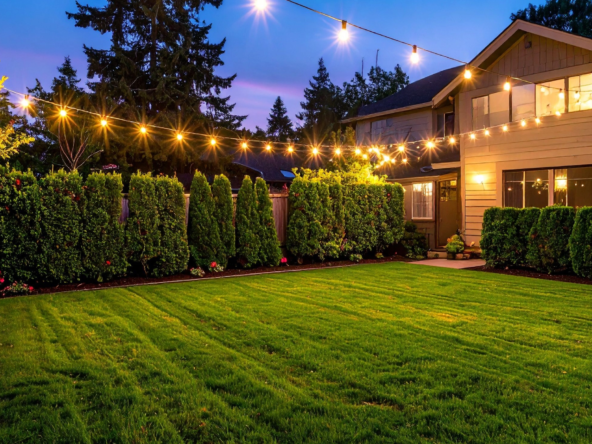TLDR
- Winter brings less listing competition and more motivated buyers ready to act.
- Eagle’s mild winters keep showings moving, photos crisp, and closings quicker.
- Inventory near 5.8 months favors balanced pricing and strong negotiation outcomes.
- Strategic prep, targeted marketing, and concessions beat price cuts every time.
What does selling in winter really mean for Eagle homeowners?
Selling a home in winter in Eagle is not a last-resort decision. It is a strategic move that aligns with how buyers behave when inventory is thinner and timelines matter. Local MLS data through late 2025 shows Eagle’s median single-family price in the upper 700s to low 800s, with average days on market near 54 and roughly 5.8 months of supply, a signal that conditions are moving toward balance. In other words, well prepared homes still sell, and negotiation is more nuanced.
Compared with national price indices that remain resilient, seasonality in Eagle is more about supply and urgency than dramatic discounting. Buyers touring in December and January are often relocating, transferring for work, or acting on financial or tax planning goals. That urgency benefits prepared sellers who launch with professional marketing and dialed-in pricing. According to Boise Regional REALTORS market reporting and MLS trends, Ada County’s median remains stable year over year, which supports list strategies that prioritize presentation over deep price cuts.
Here is how I define it as Chris Budka:
- Winter is a quality-over-quantity season that rewards polished listings.
- Proper pricing and presentation outperform across-the-board discounting.
- Prepping early and launching smartly maximizes limited competition.
How does winter timing work in today’s Eagle market?
Supply typically tightens by late fall, and that carries into winter. That means fewer competing listings around Legacy, Two Rivers, and Eagle Hills, and more eyeballs on each home that hits the market. Mortgage costs remain a factor, yet serious buyers in winter often arrive with high down payments or cash, especially relocation retirees. With the federal funds rate elevated, interest rate buydowns and closing credits can bridge the gap better than large list price cuts. You can monitor the rate backdrop via the Federal Reserve’s data service at FRED.
Winter also streamlines logistics. Lenders, appraisers, and title teams tend to have lighter pipelines, which can shave time off approvals and signing. Locally, Eagle’s winter is workable for showings. Streets remain accessible, the Boise River Greenbelt provides year-round lifestyle appeal, and neighborhood amenities photograph beautifully in crisp light. Valley Regional Transit’s Eagle On-Demand makes in-town travel easier for touring buyers, which keeps weekend traffic steady. See current service information from Valley Regional Transit.
For sellers planning a January or early February launch, I recommend lining up pre-listing tasks in December. That keeps you ahead of spring crowds while capturing those year-end and early-year motivated buyers.
Why low competition matters more than you think
Many sellers wait for spring. That creates a window in winter where your listing sits on a bigger stage with fewer distractions. In a market approaching balance, that visibility can mean stronger offers, fewer contingencies, and faster negotiation cycles.
Where in Eagle do winter listings shine the most?
Eagle’s neighborhoods are not monolithic. Buyer profiles vary by community, and winter brings distinct advantages in certain areas. Near my office at 408 S Eagle Rd, Suite 205, activity often concentrates around popular lifestyle communities and golf course or waterfront corridors that photograph beautifully in winter light.
- Neighborhood 1
– Details – Watchouts – Typical timeline
Legacy – Details: Master-planned living with lakes, pathways, and sports courts. Buyers here often value turnkey finishes and low-maintenance yards. Winter light highlights water features and mountain views. – Watchouts: HOA compliance for exterior staging, icy sidewalks around lakes require careful prep for showings. – Typical timeline: Two to six weeks with strong photography, pricing aligned to recent MLS benchmarks, and targeted digital marketing.
- Neighborhood 2
– Details – Watchouts – Entry-level path
Two Rivers – Details: Luxury homes with mature landscaping, river access, and privacy. Relocation buyers prize the community lifestyle and proximity to downtown Eagle. – Watchouts: Appraisal comps can be thin in winter. Prep an appraisal package with recent sales and improvements to support value. – Entry-level path: Some smaller floor plans or original-finish homes offer a more accessible entry point when competition wanes.
Additional winter-friendly standouts:
- Bald Eagle Point: Waterfront lots and established trees, stunning sunrise photos in January.
- Mace River Ranch: Estate-style living with river adjacency and trail access, prime for cash or high-down buyers.
- Eagle Hills: Golf course community that appeals to downsizers seeking single-level floor plans and low exterior maintenance.
- Lakemoor and Island Woods: Gated and semi-gated options near Eagle Road with quick access to shopping and restaurants.
City investments also matter. Upgrades to Eagle parks and sports facilities can boost buyer interest in nearby neighborhoods. Explore current projects like the Eagle City Athletic Park Phase 1 on the city website at City of Eagle Athletic Park and the long-range Spring Valley plan at Spring Valley Development.
What are the pros and cons of a winter sale in Eagle?
Pros:
- Less competition means greater visibility and stronger negotiating leverage.
- Motivated buyers moving for work, retirement, or year-end planning act decisively.
- Faster vendor timelines, from appraisals to title, can trim closing durations.
- Crisp winter light and bluebird days produce striking listing photos and video.
- Concessions and rate buydowns can attract buyers without slashing price.
Cons:
- Buyer traffic is leaner, which makes pricing and presentation critical.
- Landscaping is dormant, so curb appeal relies on clean lines and seasonal accents.
How do I prepare and price for a high-impact winter launch?
A winter sale rewards preparation. I coach sellers to invest where returns are most reliable. Typical pre-list budgets include professional staging for 2,000 to 3,000 square feet in the 2,000 to 5,000 dollar range, with pre-sale repairs averaging 5,000 to 10,000. Fresh interior paint, hardware swaps, lighting updates, and light landscaping cleanups usually deliver the highest impact per dollar. For photography, I schedule golden-hour shoots, plus aerials if you back to water or open space.
Pricing should reflect real-time MLS comps specific to your micro-neighborhood. Eagle is diverse, with price per square foot often in the 320 to 344 range, but micro-location and finish level determine outcomes. In a market with roughly 5.8 months of supply, I aim for a list price that sits precisely where the next buyer expects to transact. When rates are top of mind, a targeted credit or a temporary rate buydown can be more effective than an immediate price cut.
One of my clients in Brookwood launched in early January after repainting, updating fixtures, and adding a light backsplash. We priced tightly to two late-fall comps, offered a 10,000 credit toward a 2-1 buydown, and secured a near-list offer in 11 days. Another client in Eagle Hills opted for a pre-list inspection and knocked out five small items for under 4,000. We hit the market the first Thursday in February, hosted a brisk open house that weekend, and accepted a cash offer at 98 percent of list with a 21-day close.
To keep the buyer experience smooth:
- List on Thursday afternoon to capitalize on weekend tour windows.
- Keep walks, drives, and decks cleared for safe, welcoming access.
- Use warm interior lighting, clean windows, and minimal seasonal decor.
- Prepare an appraisal packet with comps, upgrades, and utility data.
For broader market context, Boise Regional REALTORS tracks county-level trends that support your pricing strategy. Visit Boise Regional REALTORS for market resources, and use the FHFA House Price Index for national perspective at FHFA House Price Index.
FAQs
1) Is winter really a good time to list in Eagle? Yes, if you prepare correctly. Winter brings fewer competing listings and buyers who are serious about moving. With balanced conditions near 5.8 months of inventory and average days on market around the mid 50s, polished homes still command strong outcomes. Focus on staging, professional photography, and pricing near recent neighborhood comps to capture motivated traffic efficiently.
2) Should I offer concessions or reduce my price in winter? Concessions typically deliver more value than immediate price drops. A closing cost credit or a rate buydown can meaningfully improve a buyer’s monthly payment while keeping your sale price intact. In my experience, a targeted 10,000 to 15,000 concession can unlock offers that would otherwise stall, especially for buyers on the edge of qualification in today’s rate environment.
3) How long will it take to sell my home in winter? Timelines vary by neighborhood, finish level, and price point. In well-positioned Eagle communities, I often see qualified interest in the first two weeks, with total market time from two to six weeks for properly priced homes. Higher-end luxury properties can take longer, so staging, lifestyle video, and targeted digital ads become essential to compress timelines.
4) Will appraisals in winter be tougher due to fewer comps? They can be, which is why preparation matters. I provide appraisers with a package that includes late fall and early winter sales, a list of upgrades with costs, and a summary of multiple-offer activity if applicable. For properties with unique features such as waterfront or extensive upgrades, this context helps support the opinion of value even when seasonal comparables are thinner.
5) How do showings work with winter weather in Eagle? Eagle’s winter is generally manageable for showings. Buyers lean on flexible windows and use Saturday and Sunday heavily. I recommend salting walkways, adding warm porch lighting, and staging with evergreen planters to enhance curb appeal. We also coordinate with Valley Regional Transit’s Eagle On-Demand resources for out-of-town buyers who want maximum convenience during touring days.
6) What upgrades deliver the best winter ROI before listing? Focus on light, cleanliness, and universal appeal. Fresh neutral paint, modern lighting, new cabinet hardware, and a modest kitchen or bath refresh often produce an outsized impact. Exterior pressure washing, clean windows, and trimmed shrubs elevate photos and first impressions. Staging in main living areas and the primary suite also makes a measurable difference in offer strength.
7) How do interest rates affect winter buyers and my strategy? Rates influence affordability and buyer psychology. Serious winter buyers are often relocating or retiring, and many arrive with cash or strong down payments. For financed buyers, a rate buydown or closing credit can be the nudge that secures the offer. Track the macro backdrop through the Fed’s rate series on FRED, then tailor concessions to current lender quotes.
Conclusion
The bottom line Selling during winter in Eagle is an opportunity, not a compromise. With inventory hovering around balanced conditions, less competition, and motivated buyers in the market, a well prepared home can sell quickly and near list. The keys are tight pricing to neighborhood comps, standout photography, and strategic incentives that improve buyer affordability without sacrificing net proceeds. If you are Moving to Eagle Idaho or transitioning locally, I bring a tailored plan that reflects our neighborhoods, our data, and our season. When you want the best realtor in Eagle Idaho, I am here to help.










